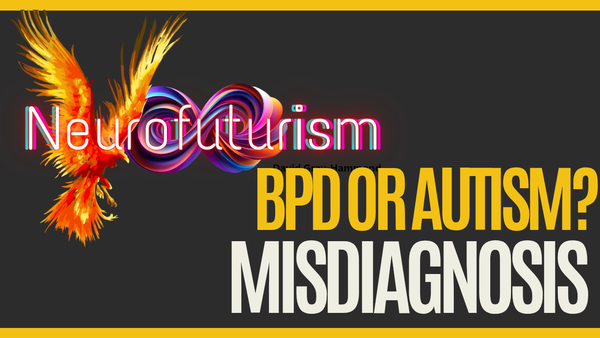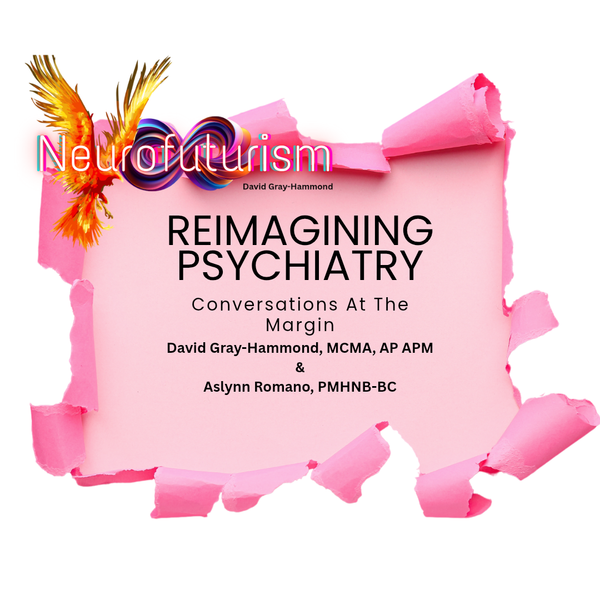CAMHS: What are the problems with "Care in the Community" for Autistic people?
The Child and Adolescent Mental Health Services (CAMHS) "care in the community" model has failed Autistic children and young people. Underfunding, staff shortages, and geographic disparities have created a hostile environment for Autistic service users, leading to a lifetime of instability. Issues w

Child and Adolescent Mental Health Services (CAMHS) primarily operate under a model known as "care in the community". This is an ambiguous name for a model that sounds better on paper than it's reality in practice. The original aim of this model was to divert psychiatric patients away from institutions and into outpatient support services. While it's history can be traced back to the 1950's it was until the 1980's that it started gaining any real traction. Today, in 2024, it is clear that community services are unable to meet demand and that the model has failed to return the results that were promised. For Autistic children and young people, these failures can lead to a lifetime of instability in multiple areas of life.
Problems with CAMHS Care in the Community Model and it's impact on Autistic people
Care in the community under CAMHS, aims to provide more accessible and less restrictive.mental health care for children and young people. Despite this, it is riddled with systemic issues that have created a hostile environment for Autistic service users:
Resource and Staffing Issues in CAMHS
Underfunding: 14 years of austerity coupled with mental health being less of a priority than it should be has left CAMHS services with far less of a budget than it needs to function effectively. When services have their funding throttled, it is often minority groups such as Autistic people that are the first to suffer.
Staff shortages: Reduced intake of qualified professionals coupled with a national crisis of xenophobia that has driven foreign professionals away from the UK means that the number of staff within CAMHS is severely below that required to operate a functional service.
High caseloads: Despite the decrease in staffing levels, demand for services has never been higher. Autistic people become an easy target for denial of services simply by being generally unresponsive to widely used forms of support.
Access and Equity for Autistic people
Geographic disparities: it's no secret that CAMHS services are a postcode lottery, albeit generally below expected standards nationwide. For Autistic people accessing service areas with a more hostile approach to neurodiversity, services can be completely unaccessible.
Stigma: Autism has been framed as a tragedy that can not be remedied for at least the past century. This stigma not only makes staff attitudes to Autistic people problematic, it creates a culture of parent carer blame that can make parents scared to ask for help.
Complex needs: Autistic people are more likely to have complex mental health needs. Community services are often not well equipped to help Autistic children and young people navigate complex and evolving needs.
Effectiveness and Outcomes
Early intervention: Systemic discrimination and lack of appropriately trained staff mean that Autistic children and young people often do not receive any kind of intervention until they are beyond the scope of community services.
Continuity of care: Siloing of specialist services and poor handover practices mean that many Autistic children and young people fall through the gaps between services.
Data collection: Limited or biased data collection on service outcomes has resulted in the denial of support for Autistic service users becoming a hidden issue.
Collaboration and Integration in CAMHS
Interagency working: Similar issues withing education, social care, and other services hampers effective collaboration resulting in inappropriate safeguarding referrals, breakdown of education placements, and failure to understand the needs of Autistic children and young people.
Information sharing: Data protection regulations and a lack of uniform systems means that information that is vital to effective support may not be passed between agencies and services.
The fallout for Autistic children and young people
These issues within the care in the community model are not an exhaustive list. They demonstrate that CAMHS failures are impacted by not only a lack of professional competency but also political decisions and hostile practice resulting from systemic failings. When considering these failings, it becomes unsurprising that Autistic young people are hugely over-represented within suicide deaths and inpatient settings.
Many applaud care in the community as an end to the asylum. The truth is that all they did was paint the asylum with white walls and call it a hospital. Autistic children and young people are being institutionalised every day because care in the community has failed. It's time that we stepped forward and demanded a system that doesn't disproportionately harm and incarcerate Autistic children.


